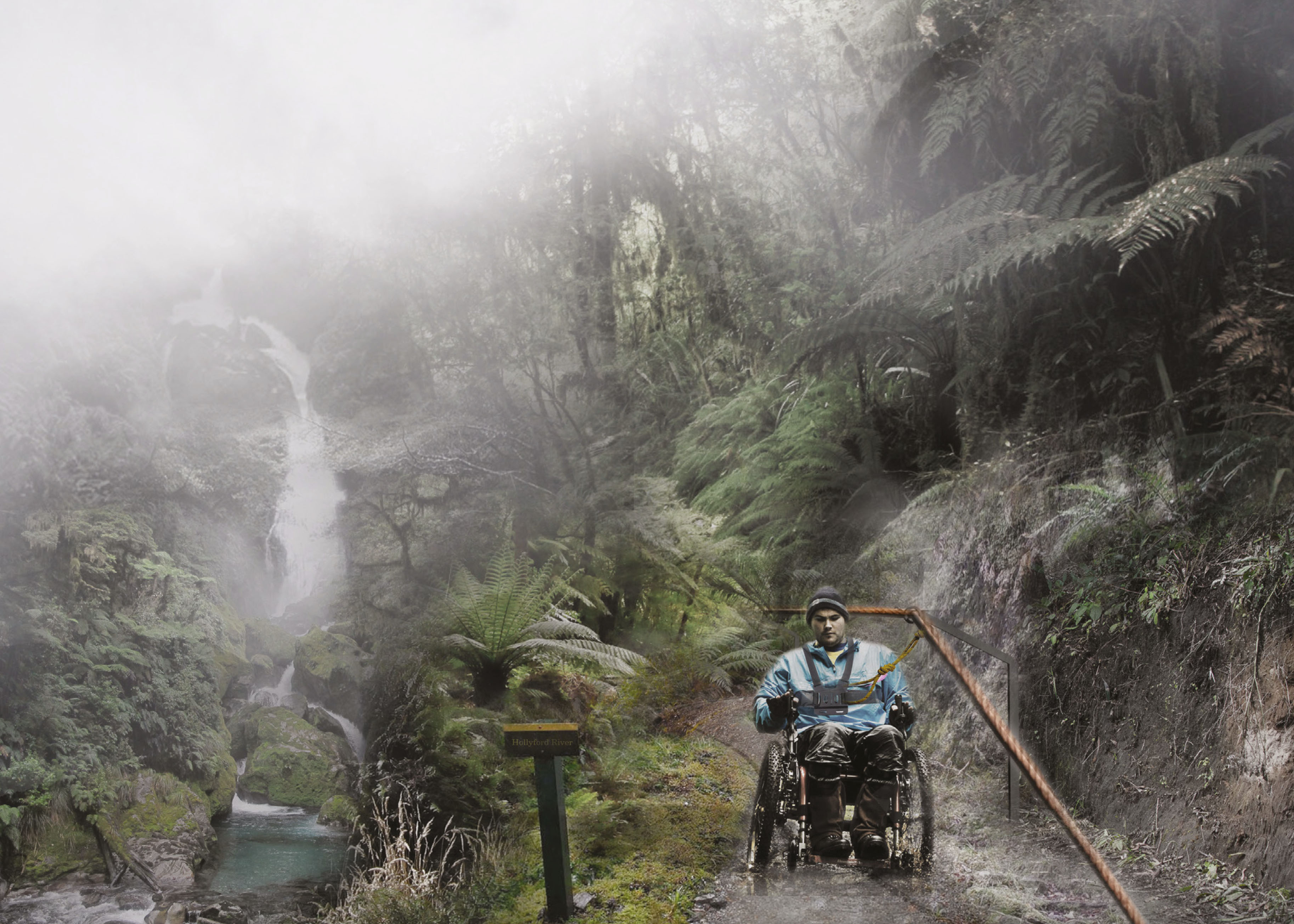
Enabling wilderness
LAND591 – Landscape architecture research thesis
School of Architecture-Victoria University of Wellington
Internationally known for its picturesque landscapes, New Zealand encourages both locals and tourists to experience them first hand by walking one of the many tracks around the country, an activity locally known as tramping. The Department of Conservation has identified a small number of these tracks as showcasing particularly picturesque areas, naming them the ‘Great Walks’ of New Zealand. These allow fit individuals to traverse unique landscapes over multiple days, staying overnight in rustic huts. The design of these tracks has not traditionally involved landscape architects and therefore this thesis breaks new ground for landscape architecture.
The relationship between healthy wellbeing and outdoor experience is well documented, but not every fit individual is physically able to experience some of New Zealand’s most significant landscapes due to the difficulty of access. In this thesis elements of design are combined with new technologies in a conservation area to propose a new ‘Great Walk’ for New Zealand that would allow athletes with physical impairments to experience New Zealand’s unique landscapes while showcasing the contribution of landscape architecture to track design.
Physically pulling/pushing and manoeuvring through ‘backcountry’ landscapes, the research-led-design method enables the physically impaired community to engage with difficult terrains in a multi-sensorial manner improving both their physical and mental wellbeing. The research engages design strategies to direct views, to ease traverse and to enhance emotional experience by appropriating technologies from industrial and mountaineering applications to address impairment specific barriers, thereby removing disability by enabling the wilderness.
